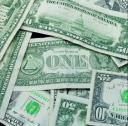The three newbies – the term auction lending facility, the primary-dealer credit facility, and the term securities lending facility – total more than half-a-trillion dollars, with more if needed. Much of this money is available not only to commercial banks but also to investment banks, which normally aren’t allowed to borrow from the Fed.
How can the Fed afford this largesse? Easy. Unlike a normal lender, the Fed can’t run out of money – at least, I don’t think it can. It can manage monetary policy while in effect creating banking reserves out of thin air and lending them out at interest.
That’s how the Fed reported a $34 billion profit in 2006, the last available year, of which $29 billion was sent to the Treasury. The Fed can even add to its $800 billion stash of Treasury securities by borrowing more of them from other big players.
Then there’s the Treasury. In March the Treasury – which failed this past winter to get private firms to establish a $100 billion “superfund” (please, no giggles from people who equate the term with Love Canal) to keep things called “structured investment vehicles” from having to sell their holdings in a bad market – unleashed Fannie Mae (FNM) and Freddie Mac (FRE, Fortune 500) and the Federal Home Loan Banks to buy hundreds of billions of dollars of mortgage-backed securities.


